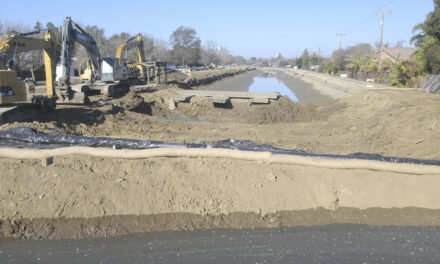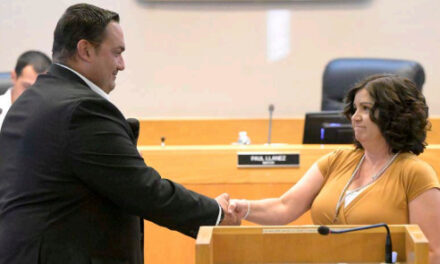The Milliken Museum’s current location is at the southeast corner of Pacheco Park in an old 3,500 square-foot building.
While described as, “a hidden gem,” by Community and Economic Development Director Stacy Elms, the current facility is filled to the brim with artifacts and exhibits ranging from the native Yokuts, to the recent past. With new boxes and totes precariously stacked on top of old ones nearly touching the roof, their home for 70 years is getting too small.
You may have heard that the Milliken Museum is planning a move. The members of the museum society’s longtime target is the empty lot on the northwest corner of H Street and Seventh Street next to the Henry Miller Plaza and the Community Center.
The museum society and their partners imagine a brand-new building at the lot, but there are two hurdles standing in their way, funding and the land.
The idea that has been floating around for what will now be a decade, has solidified into a goal. Museum Director Dan Nelson said in an in-person interview, “This has been a long-term process, this hasn’t just surfaced in the last year.”
It started as a project around 2014 but then came the first hurdle, the land. The land was previously a Southern Pacific rail yard, which was abandoned in the 1960s and ultimately acquired by the California State Redevelopment Agency (RDA). The RDAs across the state were dissolved in 2011 by Governor Jerry Brown, leaving the land in limbo for several years.
The idea of a new museum at the site simmered as being unable to obtain the site pushed the project down the line.
During that time, a partnership with two local water agencies evolved and solidified. On June 19, 2018, the successor agency of the RDA and its oversight board approved a transfer of the rail corridor land to the city, but strings were attached. This required the city to work through a compensation agreement with taxing agencies.
The agreement splits the funds made by the sale of the land. An agreement that was only finalized on Mar. 18, 2020. According to Director Elms, the process of getting all the agencies to sign off on the compensation agreement was a “big undertaking.”
On Aug. 18, 2021, the parcels making up the corridor were officially transferred to the city, marking one step closer to the new museum.
At the city council meeting on Nov. 17, 2021, Museum Director Dan Nelson gave a presentation to the council. Unanimous support for the museum led the council to direct staff to work on an agreement with the partnership and to work towards transferring the land.
After the meeting, Nelson said the partnership was, “confident that we’d be able to obtain the parcel.”
Last year, the new museum partnership pooled funds for and commissioned an architectural firm to develop the initial design for $150,000.
The concept is a two-story building with the water agencies occupying offices on one of the floors and the museum occupying the other floor. It has not been determined if the museum will be on the ground or second floor. At a planned 10,000 square-feet, the proposed new building could hold nearly three versions of the old museum.
During the architectural process, the funding hurdle came up. The building was originally expected to cost $4 to 5 million to build based on “back of the envelope” estimates according to Nelson. The building cost is now looking closer to $11 to 12 million, just to construct not to mention the extra funding for planned exhibits. The museum will need to obtain grants to fill the funding gap.
The dilemma is that many grants need a parcel secured as part of the application process.
According to the minutes of the Nov. 2 meeting of the Milliken Museum Society, after securing the parcel, Director Nelson and the water agency partners will go ‘full bore’ on securing funding from grants, local contributions and perhaps a loan.
“There are definitely challenges ahead, but the momentum and support is there,” Nelson said at the Nov. 2 meeting.
While the partnership was focused on the architectural process, the city has been working through the processes needed to transfer the parcel. The parcel will likely need to be split before it can be made available and before official talks are made to transfer ownership to the museum.
According to Nelson, the city has been very helpful and supportive of the project at every step and is confident that there is a way forward.
“We are humbled by the overwhelming support that we’ve had for this project by the city, county and the community. We look forward to working with everyone to make this project successful,” Nelson said in an email to the Westside Express.
Of the city staff supportive of the project, Director Elms counts herself among them. In an email to the Westside Express, she said, “The project would be a great asset for the community and revitalization of downtown.”



